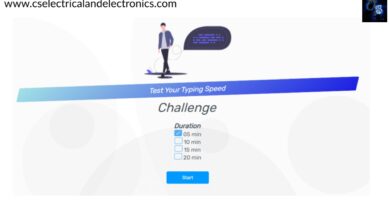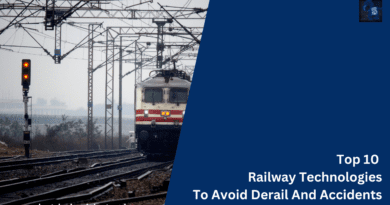What Is Service Mains, Types, Advantages, Disadvantages
Hello guys, welcome back to our blog. In this article, we will discuss what is service mains, their types, advantages, and disadvantages of service mains.
If you have any electrical, electronics, and computer science doubts, then ask questions. You can also catch me on Instagram – CS Electrical & Electronics.
Also, read:
- Top 10 Python Frameworks For Electrical And Electronics Engineers
- What MIL, SIL, HIL, And PIL In MATLAB Simulink Are, Purpose
- Types Of Temperature Sensors Used In Circuit With Explanation
What is Service Mains
Meaning Of Service Mains
The overhead line or U.G cable connecting the supplier’s distribution line to the consumer’s premises is called service mains or service connection or service line. The service line terminates at the point where the supply conductor enters the consumer meter.
See guys the purpose of a low-tension line is to transmit electricity from a distribution transformer to every street near the consumer, now how is the electricity from a low-tension line brought to the consumer’s house? This work is done by SM, SM is nothing but the conductor used to transmit electricity from low-tension lines to the consumer meter board.
As you can see in the above image SM will look like that, it consists of PVC insulation and the inside conductor is of aluminum before that copper conductor was used but the cost was a little expensive so copper is now replaced by aluminum.
Types Of Service Mains
There are two types of Service Mains :
To transmit electricity from low tension lines to the consumer meter board there are two ways to transmit electricity: one is overhead SM and another method is underground SM.
01. Overhead Service Mains
Overhead Service connection means conductors are drawn or taken above the ground level as shown in the above figure. Overhead service mains are the most common type in India. In overhead service mains, there are some materials used like insulators, wire, etc.
Now I will tell you what the materials used in overhead service mains; the materials used in overhead SM are break insulators, real insulators, messenger wires, service wires, conduit pipes, GI pipes, etc. In the next article, I will discuss in brief all these materials.
Advantages Of Overhead System
- (a). Extension of service line capacity is easy – Yes if you want to convert from a single-phase supply of your house to a three-phase supply then you can easily do it in overhead SM and it is very difficult in underground SM.
- (b). Fault location and rectification are easy – If any fault occurs in overhead SM then you can easily find the fault and do the repair but in the case of underground SM fault location is very difficult compared to overhead SM.
- (c). Easy to Erection – Erection of overhead SM is easy compared to the underground SM, in the case of underground service many things should be done like digging for pipes, and materials cost is also very high in underground SM.
- (d). It is Cheap – Materials required for overhead SM are of less cost compared to underground service mains.
Disadvantages Of Overhead System
Disadvantages of Overhead connection with underground connection are :
- (a). Ugly appearance – It will not be good in appearance as the wire are visible, suppose your house is new then the wire of service disturbs your house’s appearance or view.
- (b). Overhead space is affected – As the wires are taken from above the house roof if you suppose your child goes and touches the wire he may get shocked, so it is not safe.
- (c). Affected by weather such as sun heat and rain lightning – Overhead SMs are affected by climatic conditions like rain, sun, etc. In some years the insulation of SMs will get damaged due to the sun or rain.
- (d). Faults due to falling of trees, monkeys, birds, and reptiles.
02. Underground Service Mains
Underground Service Connection means conductors are drawn or taken below the ground level as shown in the above figure. It is very difficult to install underground SM compared to overhead service mains. The materials used in underground service mains are GI pipes, underground cables, potheads, GI bands, etc material details will discuss in the next article.
Advantages Of Underground Service Mains
The advantages of underground connection compared with overhead connection are ;
- 01. Long-life – Underground SMs are life-long as it is a permanent and it is one-time investments.
- 02. Not affected by weather such as sun, light, rain, lightning, etc – So that this system can be used for life long.
- 03. Safety to the public – As it is installed below the ground it is easy for the public as compared to overhead SM it is not safe.
- 04. It is used in metro and corporate cities where overhead connection construction is very difficult.
- 05. Good Appearance – It is good for our house’s appearance as compared to underground service mains.
Disadvantages Of The Underground System
Disadvantages of underground connection compared with overhead connection are ;
- 01. Fault location and rectification are difficult – If any faults occur in underground service mains, it is difficult to identify the fault but in the case of overhead SMs it is easy to identify the fault.
- 02. Skilled laborers are required – Yes skilled laborers are required in the case of underground SMs because the erection of underground service is complicated compared to overhead service mains.
- 03. It is costly – The cost of underground SM materials is more compared to materials of overhead SMs.
- 04. It requires more time for erection and Dismantling.
Conclusion: Which is the best overhead SMs or underground service mains? According to my, if you spend more money, then go for the underground SMs and if you can’t spend more money then go for overhead Sms. Underground SM is best and it has many advantages.
Code Of Practice
1) Tapping
The service line should be tapped from the over headline-only at the point of Support.
2) Earth Leakage Circuit Breaker
Earth Leakage Circuit breaker (ELCB) is to be used when the load exceeds 5 KVA.
3) Lead-in-pipes are used for Service connection.
4) Three-Phase
When the total load exceeds 10 KVA, the three-phase connection is used.
5) Ground Clearance
When the service line is erected across the road or along the street should not be less than 5.7m above the ground level.
6) Meter Board
The meter board should always be placed at the entrance at a height of 1.5 m from ground level.
7) The meter earth should not be used for other earthing.
8) Underground SMs are used for a distance of more than 30 m.
I hope this article may help you all a lot. Thank you for reading.
Also, read:
- 10 Tips To Maintain Battery For Long Life, Battery Maintainance
- 10 Tips To Save Electricity Bills, Save Money By Saving Electricity
- 100 (AI) Artificial Intelligence Applications In The Automotive Industry
- 100 + Electrical Engineering Projects For Students, Engineers
- 1000+ Control System Quiz, Top MCQ On Control System
- 1000+ Electrical Machines Quiz, Top MCQs On Electrical Machines
- 1000+ MATLAB Simulink Projects For MTech, Engineering Students
- 50 Tips To Save Electricity At Home, Shop, Industry, Office
Author Profile
- Chetu
- Interest's ~ Engineering | Entrepreneurship | Politics | History | Travelling | Content Writing | Technology | Cooking
Latest entries
 All PostsApril 19, 2024What Is Vector CANoe Tool, Why It Is Used In The Automotive Industry
All PostsApril 19, 2024What Is Vector CANoe Tool, Why It Is Used In The Automotive Industry All PostsApril 13, 2024What Is TCM, Transmission Control Module, Working, Purpose,
All PostsApril 13, 2024What Is TCM, Transmission Control Module, Working, Purpose, All PostsApril 12, 2024Top 100 HiL hardware in loop Interview Questions With Answers For Engineers
All PostsApril 12, 2024Top 100 HiL hardware in loop Interview Questions With Answers For Engineers All PostsMarch 22, 2024Driver Monitoring Systems In Vehicles, Working, Driver Sleepy Alert
All PostsMarch 22, 2024Driver Monitoring Systems In Vehicles, Working, Driver Sleepy Alert








